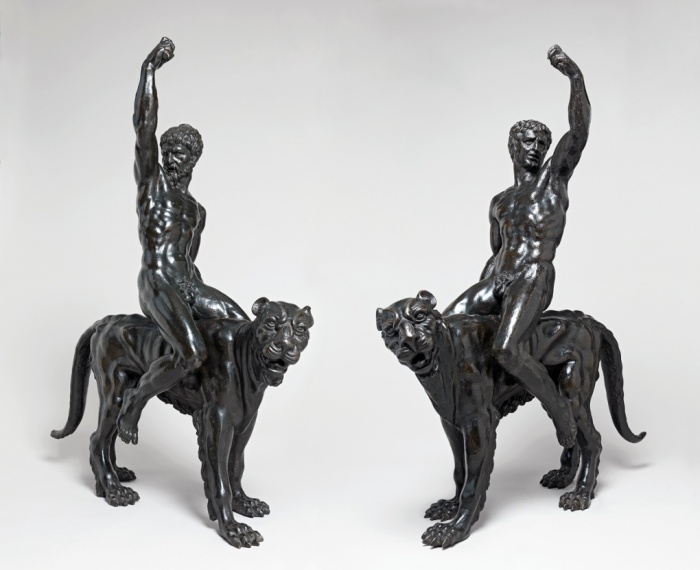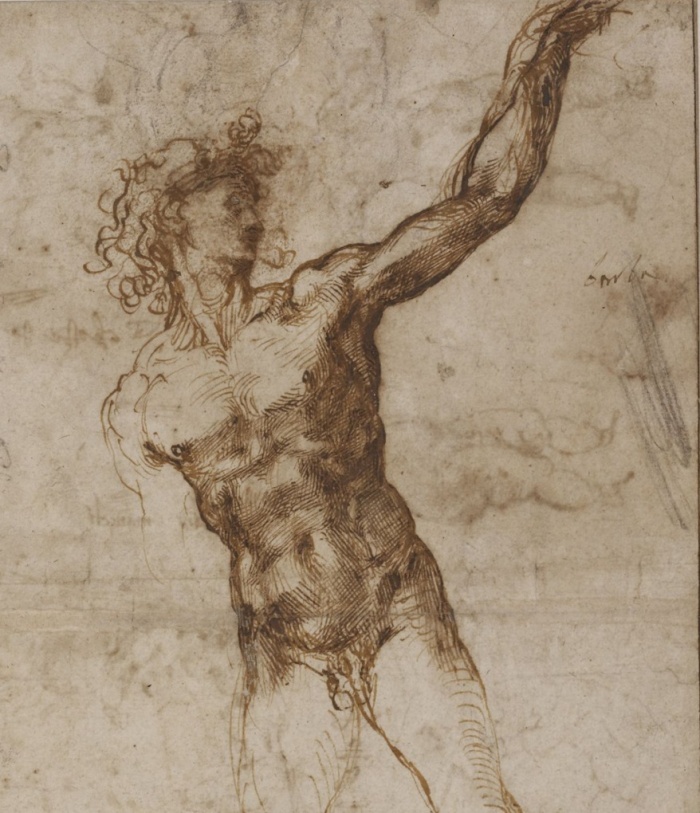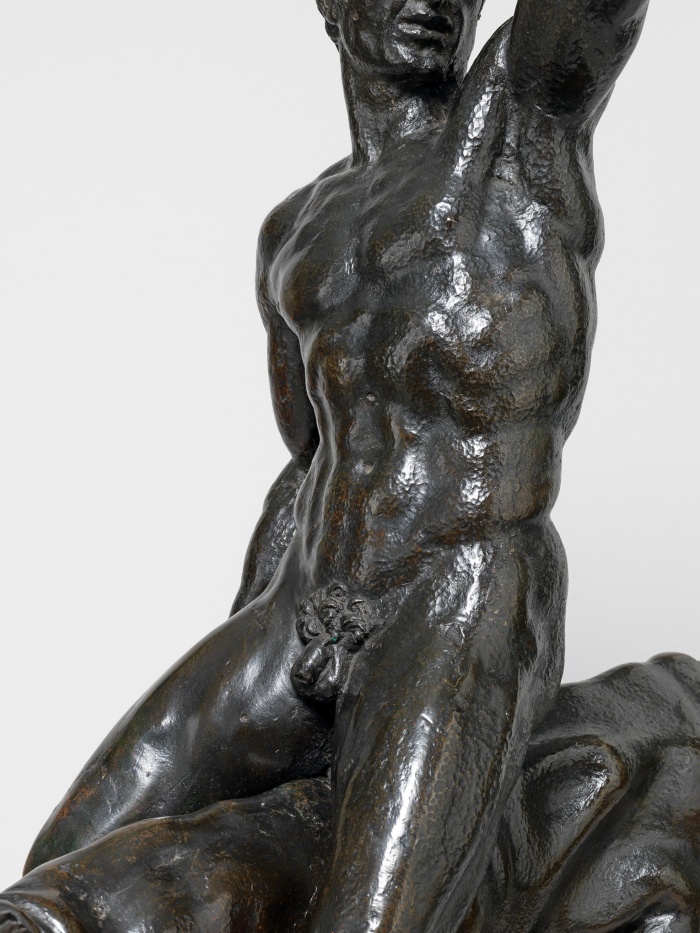By Anne Leader
British researchers have attributed two bronzes to Michelangelo Buonarroti. On view at the Fitzwilliam Museum in Cambridge through 9 August 2015, the two statues show muscular Bacchants (followers of the Roman god of wine) riding on the backs of panthers, animals associated with Bacchus and his entourage. Some scholars believe that Michelangelo created the bronzes between his projects to sculpt a monumental David for the city of Florence (1501-4) and fresco the ceiling of the Sistine Chapel in Rome for Pope Julius II (1508-12). Others have expressed doubts that they are by the famous sculptor, in part because no historical documentation of their existence prior to the nineteenth century has yet come to light.
Usually off public display in a private collection, the statues, also known as the “Rothschild Bronzes,” sparked new research after their inclusion in a 2012 exhibition at the Royal Academy in London. In that show, organized by David Ekserdjian who discusses the new attribution in Apollo, the statues were identified as by an unknown mid-16th-century Roman artist. After visiting the 2012 show, Professor Paul Joannides linked the statues to a sketch by one of Michelangelo’s students, and neuron x-ray imaging has since suggested that the sculptures can be dated much earlier to the turn of the 16th century. Fitzwilliam curator Victoria Avery explains the new attribution in a video.
Michelangelo is known to have made a few bronze sculptures, including a David that was melted down during the French Revolution and a monumental portrait of Pope Julius II that met the same fate soon after it was installed in Bologna. Thus, the Bacchants Riding Panthers, if they are by Michelangelo, would be his only bronzes to survive. They were recognized as by the artist in the 19th century when they belonged to Baron Adolphe de Rotschild. Doubts arose in the 20th century, with attributions to a range of 16th-century sculptors, including Dutch sculptor Willem Danielsz van Tetrode (1525-1588) and the Italians Benvenuto Cellini and Jacopo Sansovino. The debate will surely continue for some time to come.
Nude bacchants riding panthers, bronze, c.1506-08, full views and details. Photographs: Michael Jones/The Fitzwilliam Museum © Fitzwilliam Museum, Cambridge.
Unknown draughtsman, after Michelangelo: detail showing nude on a panther from Sheet of studies with the Virgin embracing the Infant Jesus, ca. 1508, pen and ink on paper. Musée Fabre, Montpellier. Photograph: Musée Fabre de Montpellier Méditerranée Métropole
Michelangelo Buonarroti, Nude Young Man Looking Right, Beckoning, detail. 1503/4, pen and two shades of brown ink on paper. British Museum, London. Photograph: The Trustees of the British Museum
Michelangelo Buonarroti, Male Nude, seen from rear. ca. 1504-05, pen and ink over black chalk on paper. Casa Buonarroti, Florence. Photograph: Associazione MetaMorfisi









